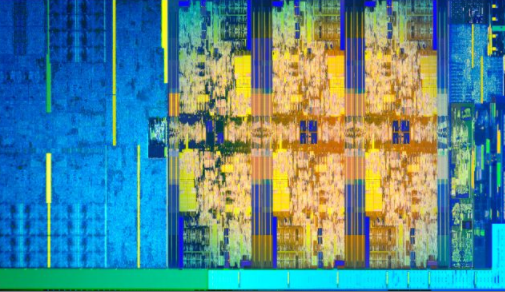Although there’s a lot of new enhancements coming to the party, arguably the biggest one for most people is that Intel has finally expanded the core counts across the range, which is something they’ve not done on non HEDT systems since they originally went to quad-cores with the Core 2 Extreme QX6700, way back in 2006. If you wanted more Intel cores than four previous to now, you’d have to move to HEDT, but no longer. Core i7 is moving to six cores with HyperThreading, Core i5 is moving to six cores, and Core i3 is moving to four cores.
| Basic Specifications of Intel Core i5/i7 Desktop CPUs | |||||||||||
| 7th Generation | 8th Generation | ||||||||||
| CPU | Cores | Freq. (Base) |
Freq. (Boost) |
L3 | TDP | CPU | Cores | Freq. (Base) |
Freq. (Boost) |
L3 | TDP |
| i7-7700K ($305) |
4/8 | 4.2GHz | 4.5GHz | 8 MB | 91W | i7-8700K ($359) |
6/12 | 3.8GHz | 4.7GHz | 12MB | 95W |
| i7-7700 ($272) |
3.6GHz | 4.2GHz | 65W | i7-8700 ($303) |
3.2GHz | 4.6GHz | 65W | ||||
| i5-7600K ($217) |
4/4 | 3.8GHz | 4.2GHz | 6 MB | 91W | i5-8600K ($257) |
6/6 | 3.6GHz | 4.3GHz | 9 MB | 95W |
| i5-7400 ($170) |
3.0GHz | 3.5GHz | 65W | i5-8400 ($182) |
2.8GHz | 4.0GHz | 65W | ||||
| i3-7350K ($157) |
2/4 | 4.2GHz | NA | 4 MB | 60W | i3-8350K ($168) |
4/4 | 4.0GHz | N/A | 6MB | 91W |
| i3-7100 ($109) |
3.9GHz | NA | 51W | i3-8100 ($117) |
3.6GHz | N/A | 65W | ||||
Intel is saying up to 25% more FPS and 45% better performance when “mega-tasking” compared to the Core i7-7700K. Those are fairly bold claims, so we’ll have to see how they make out, but it would not be out of the realm of possibility, especially on the “mega-tasking” where Intel is talking about gaming, plus streaming, plus recording of PlayerUnknown’s Battlegrounds, compared to the quad-core i7-7700K.



